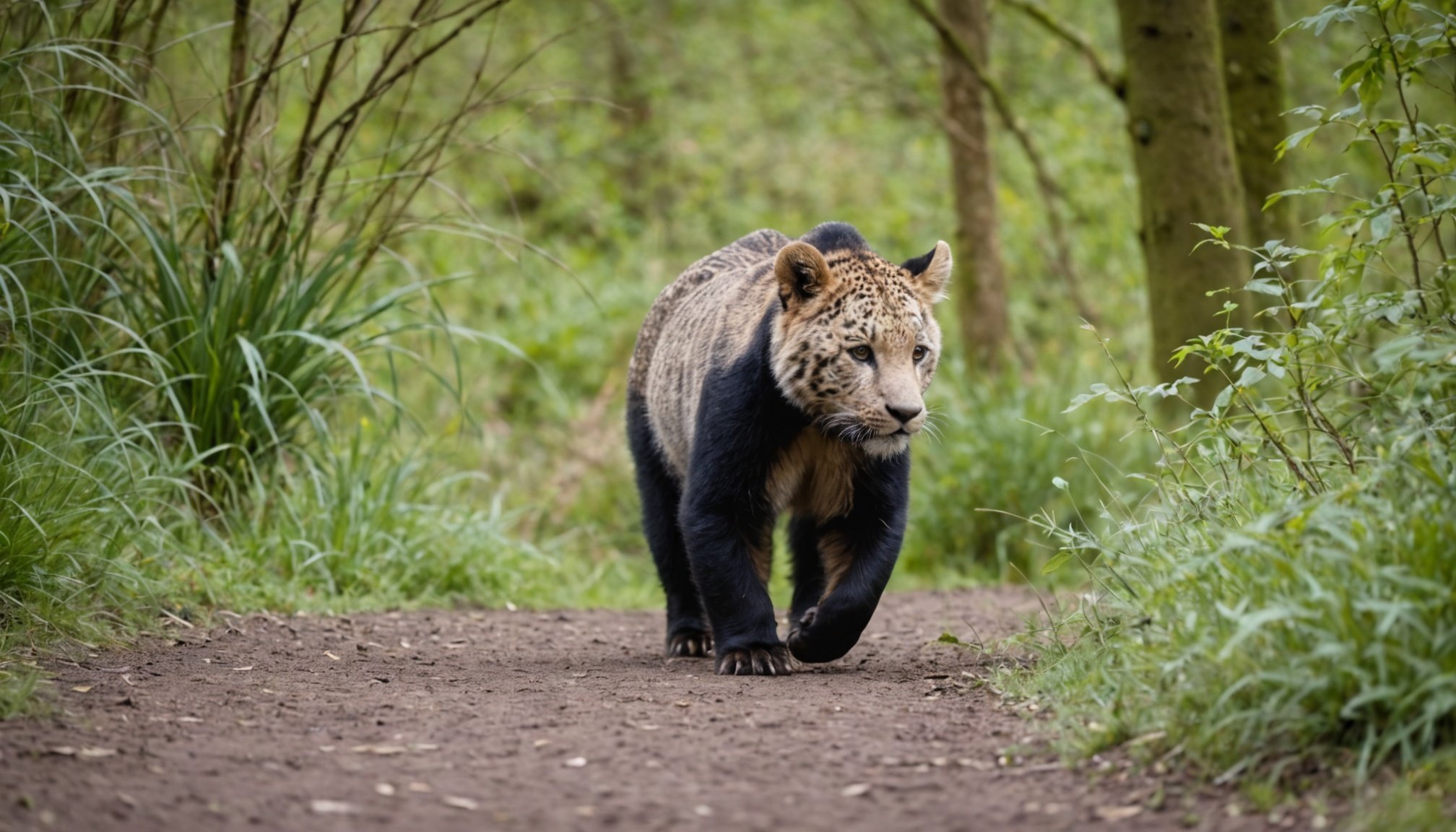Overview of Animal Escape Risks in UK Wildlife Parks
In the context of UK wildlife parks, understanding animal escape risks is crucial for enhancing park safety. With numerous factors contributing to potential escapes, it’s important to assess common causes to implement effective incident prevention strategies. For instance, gaps in enclosure security can be significant contributors. Historical instances of animal escapes in the UK provide valuable insights into these incidents.
Between 2015 and 2020, several wildlife parks reported escapes due to unforeseen weaknesses in enclosure design or failures of safety protocols. Understanding these risk factors aids in the formulation of robust safety measures, thereby preventing future escapes. For example, improving barrier materials and integrity checks have been emphasized as a result of past incidents.
Topic to read : Innovative approaches by uk scientists to reduce bird strikes in wind farms
Regular risk assessments are vital for identifying vulnerabilities and enhancing wildlife park safety. By learning from history, parks can adapt and meet the evolving needs of both the animals and the environment. Implementing proactive measures, such as increased surveillance and thorough safety protocols, ensures a safer experience for both visitors and the park’s inhabitants. Establishing a culture of safety within wildlife parks begins with identifying and understanding the historical context of escapes, leading to informed and effective prevention measures.
Guidelines for Public Safety During Animal Escapes
Ensuring public safety during animal escape incidents requires well-structured strategies. To maintain visitor safety, immediate and effective communication strategies are crucial. An announcement system should be in place to inform visitors of an ongoing incident with precise instructions. This ensures that people are aware of the situation and can act accordingly without inducing panic.
In parallel : Uncovering the national trust’s essential role in uk wildlife conservation efforts
Clear visitor guidelines are essential in these situations. These guidelines may include staying calm, following staff instructions, and remaining in safe areas until the situation is declared under control. Signage throughout the park can further reinforce these instructions, offering visual cues in case of an emergency.
Communication strategies should also involve digital platforms. In the modern age, utilizing social media and mobile alerts can rapidly disseminate information, offering real-time updates to the public about the situation’s status and any subsequent actions to take.
Finally, it’s vital to integrate information dissemination into the park’s safety protocols. By regularly updating and reviewing these protocols, parks can ensure that both staff and visitors are effectively informed about potential incidents, enhancing overall wildlife park safety during emergencies. This proactive approach not only safeguards visitors but also preserves the reputation and smooth operation of the park.
Prevention Measures for Animal Escapes
In the pursuit of ensuring wildlife park safety, implementing robust escape prevention strategies is essential. One fundamental approach is designing enclosures that are meticulously tailored to the specific needs and behaviours of various species. This involves using materials that deter climbing, digging, or other escape behaviours. The design process should account for animal strength, agility, and special requirements to prevent breaches in enclosures.
Regular maintenance and inspections of park infrastructure further bolster the safety net, ensuring that all structural elements remain secure and functional. This includes thorough checks of fences, gates, and any technological systems in place. Consistent evaluations are critical as they help identify weaknesses before they lead to potential escapes.
Leveraging technology is another crucial component in preventing escapes. Utilizing sensors and cameras for monitoring provides real-time data, allowing for immediate response if an enclosure breach occurs. Such proactive monitoring not only aids in preventing escapes but also enhances the overall incident prevention framework of wildlife parks.
These strategies, when combined, form a comprehensive defence system that enhances the integrity of enclosures and ensures the safety of both animals and visitors, whilst maintaining the park’s reputation as a secure environment.
Training Protocols for Wildlife Park Staff
Effective staff training is pivotal for maintaining safety in wildlife parks. It is essential that training modules cover relevant topics like animal behavior, potential escape scenarios, and proper emergency responses. Understanding animal behavior helps in crafting responses that are both safe and effective, ensuring staff can handle any unexpected situations.
Regular safety drills and simulations are necessary to ensure readiness and confidence when incidents occur. These exercises allow staff to practice emergency response planning and learn to coordinate with colleagues under pressure. Consistent drills foster muscle memory, enabling quick, instinctive actions during actual emergencies.
Moreover, ongoing education and refresher courses are vital in keeping the staff informed about the latest safety measures and procedural updates. The field of wildlife management is ever-evolving, and continuous learning ensures that staff remain informed and prepared.
Establishing a culture of safety is equally important. This involves encouraging open communication among staff members, allowing them to share insights and concerns. By fostering a collaborative environment, parks can ensure a comprehensive and unified approach to dealing with animal escape risks, benefitting both the visitors and the animals alike.
Emergency Response Plans for Animal Escapes
Ensuring robust emergency protocols is critical in effectively managing animal escape incidents. Developing comprehensive response plans tailored to each park’s unique layout is essential. These plans play a pivotal role in seamless incident management, addressing potential challenges posed by variable terrains and enclosure designs.
Effective response planning involves coordination with local authorities and emergency services to guarantee a swift, collaborative effort when escapes occur. Parks should establish communication lines and protocols with these external agencies, ensuring all parties are well-prepared for any eventuality. This collaboration extends beyond reactive measures, fostering a proactive stance on wildlife park safety.
Frequent drills and simulations are key to maintaining a state of readiness among staff. Implementing regular practice sessions helps ensure all staff members are familiar with their roles and responsibilities during an incident. These exercises must simulate various escape scenarios, adapting to new risks and innovations in park management.
Such preparatory steps enhance staff confidence and competence, ultimately enabling park personnel to handle real-life escapes with precision and agility. By prioritizing these strategic elements, parks can better protect both their animal inhabitants and the visiting public, reinforcing a strong safety framework.
Case Studies of Past Animal Escape Incidents
Examining case studies of past animal escape incidents in UK wildlife parks provides invaluable insights into incident analysis and lessons learned. Notable escapes often highlight vulnerabilities in enclosure design and management practices, bringing about critical improvements in safety measures. For example, an incident involving a group of capuchin monkeys at a park emphasized the need for better tree trimming near enclosures, as overhanging branches facilitated their escape.
Learning from these incidents also involves understanding the challenges faced during each occurrence. In one case, zookeepers discovered that a young lioness had escaped due to a faulty latch in her enclosure. This situation pointed to the importance of thoroughly inspecting animal containment systems and ensuring all mechanical parts are in optimal condition.
By dissecting these past escapes, parks have implemented proactive changes such as improving safety protocols and redesigning animal enclosures to prevent future incidents. Each case study serves as a crucial learning opportunity, guiding parks in refining their operational strategies. Identifying both the successes and obstacles encountered in previous escape scenarios is essential for enhancing incident management and promoting a safe environment for both animals and visitors.
Relevant Regulations for Wildlife Parks in the UK
Understanding wildlife park regulations is crucial for ensuring both animal and public safety. UK legislation mandates that wildlife parks comply with stringent compliance standards to maintain high levels of safety and welfare. Key regulations include the Zoo Licensing Act 1981, which requires parks to secure licenses by demonstrating safe enclosure conditions and effective management systems.
Adhering to these compliance standards ensures that animal escape risks are minimized through robust planning and execution. This involves regular inspections by local authorities to verify that parks meet legal obligations, such as maintaining secure barriers and sufficient facilities for animal care. Ensuring wildlife park safety also requires parks to adopt proactive measures that go beyond basic compliance, aiming for best practices in all operational aspects.
Legal obligations extend to conducting routine audits and implementing corrective measures when necessary. By doing so, parks can identify potential vulnerabilities early, leading to more effective incident prevention strategies. Audits not only check for compliance but also supply valuable feedback, steering parks toward enhancements in their safety protocols. This strategic approach not only safeguards animals and visitors but also solidifies the park’s reputation as a compliant and responsible institution.











